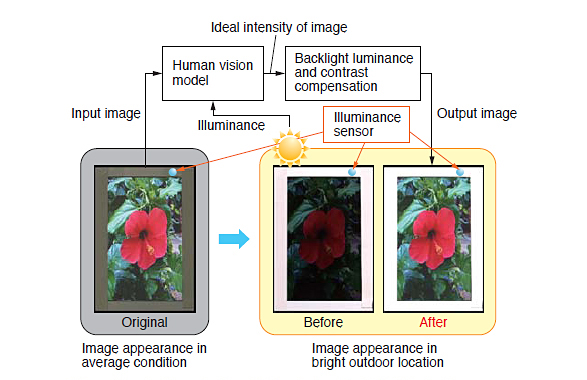- Back to the previous page
- AI Technology
Illumination-Adaptive LCD Control Technology
The use of mobile devices equipped with a LCD has recently become more common under various
illumination conditions. Conventional LCDs, however, suffer from the problem of poor image quality because they appear too bright in a dark room and less brilliant in a bright outdoor location.
To overcome this problem, Toshiba has developed an illumination-adaptive LCD control technology that
improves image visibility.
This technology provides backlight luminance control and contrast compensation based on a prediction of the optimal intensity of the image under the illumination condition. The control mechanism employs a human vision model, which is derived from rod and cone cells that mainly work in dark and bright conditions, respectively.
As a result, the visibility of the LCD is significantly improved over a wide range of illumination conditions, from bright outdoor locations (3 700 lx) to dark rooms (100 lx).
This technology has already been applied to our mobile phones and will be applied to future models of other mobile devices such as notebook PCs, car navigation systems, and music and video players.

Flow of illumination-adaptive LCD
control under bright illumination condition


